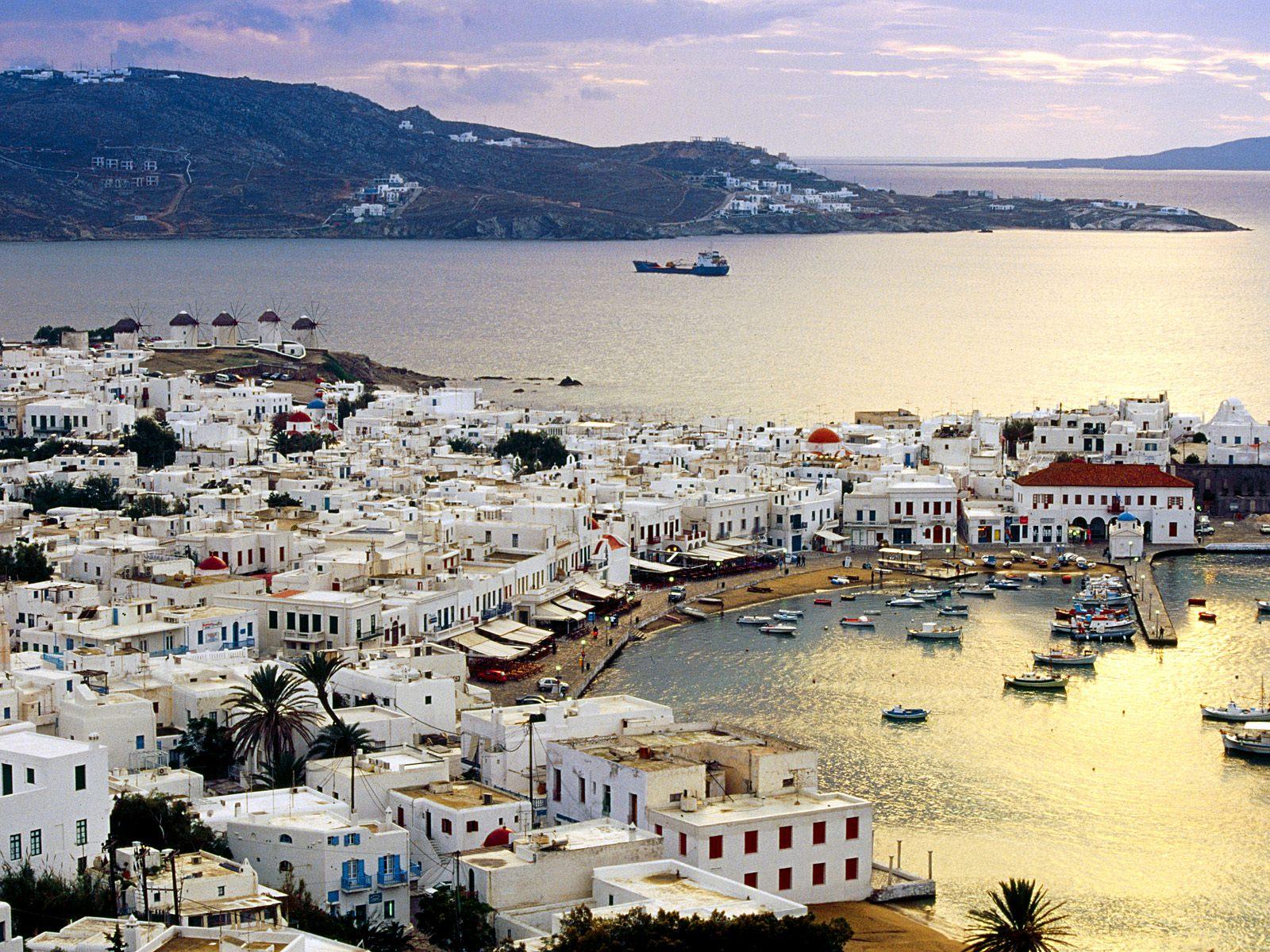Journey to Mykonos
JOURNEY TO MYKONOS
Rodos, Symi, Tilos, Kos, Kalymnos, Leros, Patmos, Amargos, Naxos, Ikeria, Мikanos, Astypalaia, Nysiros :
Sun, white beaches untouched by civilization, life and traditions of the ethnic group of tiny villages, well preserved ruins of ancient cities .... what else can be better than an adventure and fun ?! We invite you to join our sailing trip to the island of Mykonos and enjoy the relaxed and leisurely culture of the Aegean Sea, to visit the best of our selected local tavernas - try the delicious taste of the Greek islands. Our school is located in the south of the Aegean Sea, so you can start enjoying the refined and the unique taste of Greece, right away!
If you are not a resident or citizen of the European Union to participate in the sailing trip you need a valid Schengen visa.
Drop anchor in a secluded cove and enjoy a relaxing holiday on a yacht, all the while learning to control a sailing yacht. Upon successful completion of the course, you will receive a certificate skipper IYT, which will allow you to take the Yacht charter all over the world. You can also learn about other licenses offered by IYT, which we offer in this section License.

| PROGRAM | ||
| Day 1 Datça - Cairos Marina Our yachts are based in Cairos Marina> . Arrive to the yacht and spend the night aboard in the Marina. You can also use the opportunity to do some shopping in the marina and stock up for your sailing trip. |
0nm | |
| Day 2 Cairos - Turgutreis - Kos Sunday: After breakfast, we conduct a group shopping. Than We leave for TurgutReis for customs procedures. As soon as our documents are ready for exit, we depart from Turgutreis. Our first stop is the lovely Island of Kos. Kos is the most fertile island of the group and the second most touristy and popular island after cosmopolitan Rhodes. Kos is an attractive island with appealing mountainous villages, an excellent infrastructure, verdant landscape, abundant ground water and superb beaches of various sizes and colors. Rich in history, with abundant ancient ruins, as well as modern, lively towns, Kos is most enjoyable. Usually dinner continues well into the evening, the night being filled with laughter and memorable conversations. Water, electricity, wi-fi, hot showers and toliets are provided by the restuarant. |
35nm | |
| Day 3 Kos – Kalymnos (Vathy bay) Next stop is the picturesque island of Kalymnos. Countless bays and coves cut into the island from all sides, making it a unique spot to anchor, surrounded by high cliffs. A popular place for sponge diving, residents still collect sponges daily.Vathi is a small village beweek narrow and deep inlet of sea and a valley. It is just picturesque |
20nm | |
| Day 4 Kalymnos - Leros Next upwind stop is Leros. Leros Island is another place ideal for those who crave for most absolute tranquility on a beautiful island. Having a coastline 71 km long as well as a mountainous topography, it offers a number of gulfs and beaches, some of them with some vegetation. In general terms, the villages of Leros are the typical Aegean villages in this specific area, and are scattered all around the volcanic area. The sea scalped the coastline of Leros with lavish artistry giving it lacy shores, sandy beaches, protected harbors and multitude of little islands all-around it. |
25nm | |
| Day 5 Leros - Patmos Patmos is a popular island for Christian pilgrimage, due to its association with Saint John and the Book of Revelation. The massive castle/monastery that overlooks the main port is also a UNESCO site and is well worth a visit. The island itself is small but very attractive: picturesque villages, many churches and an unforgettable landscape. |
25 nm | |
| Day 6 Patmos - Ikeria This tiny island’s long history has been as rocky as its topography. The outcropping in the Aegean Sea has been the target of invasions by Persians, Romans and Turks, forcing its residents inland from the coasts. The result: An isolated culture rich in tradition, family values – and longevity. Rocky mountains, dramatic gorges, hiking trails, mesmerizing beaches, and rural villages set the scene of a dreamy holiday destination, especially for nature lovers! |
35 nm | |
| Day 7-8-9 Ikeria - Mykonos We either start very early or do an overnight passage (depending on weather) to our Western-most point of the trip, the popular island of Mykonos. The island is well known for its livid nightlife and white sand beaches, not to mention many historical places to visit. We will spend two days here, in order to properly explore this Greek paradise! |
45 nm | |
| Day 10 Mykonos - Naxos As we start our return trip, we sail to the formidable Naxos; the island is characterized by high mountains and plenty of vegetation. Famous for its wine and vegetables, Naxos, unlike most Greek islands, has its own water sources. After our arrival the the main harbor, enjoy the relaxed atmosphere of this beautiful island. |
25 nm | |
| Day 11 Naxos - Levitha Our next stop is the isolated island of Levitha, home to a thousand goats, 20 sheep, 3 donkeys and 5 humans. Here we will anchor in a secluded cove and be totally shut off from the modern world. Swim, hike and enjoy a dinner of fresh goat and fish at the small restaurant run by the only family living on the island. |
55 nm | |
| Day 12 Levitha - Kalymnos Next stop is the another bay Kalymnos. Emporios is idyllic, peaceful, charming with the best restaurants on the island. If you want to chill, swim, eat fantastic food and experience the real Greecee. Off the beaten tourist track, here you can enjoy a peaceful dinner at the local tavernas. |
30 nm | |
| Day 13 Kalymnos - Kos An early departure for Kos - We will head for our last stop. We will finish our passport and customs procedures here. You can also visit places around Kos as your second chance. |
30 nm | |
| Day 14 Kos - Datca Cairos Marina We again leave early for our final passage back to Rhodes, where we finish our voyage and enjoy our collective farewell dinner. Students can either leave in the evening or stay overnight until Saturday morning. Saturday morning boats will be cleaned, So you need to leave before 9:00 |
30 nm | |
| Total | 355 nm | |
ACCOMODATION
- You will stay on board the yacht for 14 nights in a typical two week program
- Our sailing yachts have 4 cabins plus an additional skippers’ cabin..
- We take a maximum of 6 people on one yacht
- We provide bed sheets, pillow covers and a towel for each person
- The crew of each sailing yacht will make a collective shopping and share costs equally. We can provide a suggested shopping list. People can decide on whether to cook on board or enjoy local delicacies in seaside restaurants. The Skipper/Instructor is fed at the crews’ expense.
- We stop in a different bay or island for each night. Our routes are published yearly and they will be either along the Turkish coast or Greek Islands depending on the particular week(s). You can browse through our routes here:( Program )
- In the morning, an optional tour/trek will be organized by the Skipper at 8:00 AM to visit a historical site or just enjoy nature. Theory is taught after breakfast (10:00-12:00)
- In our region, the wind usually picks up at around 12:00 PM, so we depart for our next location at around noon.
- After arrival to our destination (16:00-18:00), people will have free time until dinner. You may choose to swim, rest, study or go for a nature walk.
- Dinner is held at 19:30 and continues for a few hours as we enjoy the local cuisine and indulge in conversation. After dinner you may participate in playing games (cards, chess, etc.), listening to music or just enjoying nature…
- Saturday is check-in and meeting day. Our sailing yachts are located in Cairos Marina .You can check in anytime after 16:00 and settle on board.
- Our first briefing is held at approximately 17:00 and then we stock up on provisions. We have our first dinner together in the marina and afterwards people can explore the colorful night life!
- Sunday is our first day of sailing. We finish last minute shopping and start our voyage around noon.
- Our sailing tour ends Friday (1 or 2 weeks later); after 16:00. You may leave the yacht or stay one more night to enjoy the town. All Yachts have to be empty by 9:00 on Saturday morning to allow for cleaning and preparation for the next group.
- Two weeks of sail training, trip to MYKONOS starts from 2700 Euros. Bareboat Skipper License is an additional 200 Euros.
- If there is less than 3 people, Participants needs to share the cost of entry/exit procedures.
- You can call Tansel +90(541) 4561366 , Email us:
This email address is being protected from spambots. You need JavaScript enabled to view it. or make a self-reservation from our web reservation . - We require a 25% deposit in order to confirm your reservation. You will receive a confirmation form after your payment.
Tags: Journey to Mikanos sailing route plan
Tags: Greek islands, greek islands sailing, greek islands tour, greek islands sailing tour, sailing tour, sailing vacation, rodos, symi, kos, amargos, naxos, Ikeria, Мykanos , Astypalaia, kalymnos, tilos, sailing training,
Tour Plans
You May Also Like:

Santorini Tour Plan
Kos, Tilos, Astypalia, Anafi, Kalymnos, Levitha, IOS, Santorini, Nysiros, Symi
Tansel Yuzer
2 weeks€1800
...

Kusadası Ephesus, Sigacik, Alacati, Cesme trip
Gumusluk, Didim, Kusaadasi, Sigacik, Alacati, Cesme, Doganbey, Yalıkavak, Turgutreis, Mersincik :
Tansel Yuzer
2 weeks€1500
...

Bodrum - Turkbuku Güllük Gulf Tour Plan
Gümüşlük, Türkbükü, Yalıkavak, Torba, Gulluk, Kiyikislacik, IASOS, Didim, Aktur, TurgutReis :
Tansel Yuzer
2 weeks€1500
...





